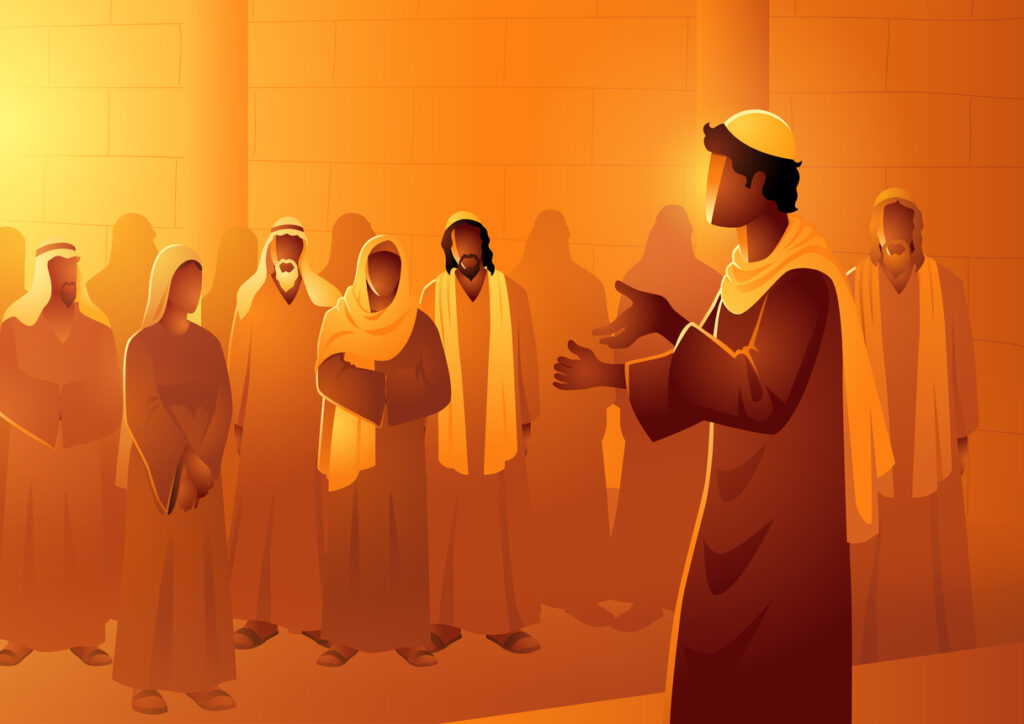Did Jesus Fulfill the Law—or God’s Instruction?
And What’s the Distinction?
Most Christians have heard that Jesus “fulfilled the law,” often taken to mean He completed its purpose—checked it off—and therefore believers are no longer bound by it.
It’s one of the most widely accepted ideas in Christianity today. Yet few realize that this conclusion doesn’t come from the original text at all. It comes from shifting meanings through translation.

When we read “law,” our minds picture statutes, restrictions, and courtroom language. But in the Hebrew Scriptures, the word translated law is Torah—a word that carries a very different meaning.
The word Torah doesn’t primarily mean a legal code; it’s God’s instruction—His teaching and guidance in how to live faithfully as His people.
If that’s true, then the common assumption about Jesus’ words in Matthew 5 takes on an entirely different meaning. He didn’t come to end God’s instruction—He came to embody it and reveal its full intent.
How Translation Shaped Theology
The shift from “instruction” to “law” didn’t happen by accident. When the Hebrew Scriptures were translated into Greek around the third century B.C., the translators rendered Torah as νόμος (nomos), which can mean “law” but also “custom” or “principle.”
Later, the Latin Vulgate used the word lex, meaning “legal code.” By the time the Bible reached English readers, Torah had been flattened into a single concept: law.
Each translation step pulled the word further from its relational, covenantal meaning and closer to a Western legal mindset. What began as the loving instruction of a Father became, in English, the rules of a Judge.
But the Hebrew Scriptures never portrayed the word Torah as cold legislation.
Psalm 1 says: “Blessed is the man whose delight is in the Torah of the LORD.”
Psalm 19:7 adds: “The Torah of the LORD is perfect, restoring the soul.”
These are not descriptions of mere legal compliance—they are expressions of joy in God’s guidance. Torah was always meant to restore, not restrict.
Word Study: What Torah Really Means

Torah (תּוֹרָה) comes from the Hebrew root ירה (yarah), meaning to point out, to teach, to instruct, to guide.
It can refer to any kind of teaching—parental, priestly, or prophetic. When applied to God, it means His revealed instruction—the path He points out for His people. It can best be understood as righteous instruction in how to live faithfully.
By contrast, the Greek nomos and Latin lex emphasize law or regulation.
Understanding this difference reshapes how we read both Old and New Testament references to “the law.”
What Jesus Actually Said in Matthew 5
In the Sermon on the Mount, Jesus declared:
“Do not think that I came to destroy the Law (nomos) or the Prophets.
I did not come to destroy but to fulfill.” (Matthew 5:17)
The Greek word for “fulfill,” plēroō, means to fill up, to bring to full expression, or to embody completely.
Jesus wasn’t saying, “I came to finish this so you don’t have to.”
He was saying, “I came to live it perfectly and reveal what it truly means.”
If the meaning of the word Torah is God’s instruction on how to live faithfully, then Jesus’ words make complete sense.
He didn’t come to abolish God’s teaching—He came to live it, teach it, and internalize it as an example to His followers.
Immediately afterward, He gives examples:
“You have heard it said… but I say to you.”
He doesn’t replace commandments—He deepens them.
Murder extends to hatred; adultery to lust. Jesus reveals that the idea behind the word Torah was never just about external compliance—it was about internal transformation.
The Weight of Added Traditions
By Jesus’ time, religious leaders had surrounded God’s instructions (Torah) with layers of oral tradition—extra rulings meant to “protect” the law. Over time, these human additions became burdens heavier than the Torah itself.
Jesus frequently confronted this distortion:
“You leave the commandment of God and hold to the tradition of men.”
— Mark 7:8
He healed on the Sabbath, not to break God’s instruction (Torah), but to restore it to its faithful intent.
The Sabbath was made for man, not man for the Sabbath.
His actions cut through the clutter of man-made rules and brought God’s original instruction back into focus—showing that divine law was always meant to bless, not bind.
When He accused the Pharisees of hypocrisy, His target wasn’t the Torah—it was their misuse of it. They had turned righteous instruction into religious regulation.
Righteous Instruction in How to Live Faithfully
If Torah means instruction, then its purpose was never to make humans righteous by their own effort. It was to reveal the righteous way of life—the path of faithfulness to God’s covenant.
That’s why this phrase—“righteous instruction in how to live faithfully”—captures the heart of the matter so well.
The Torah is righteous because it comes from the Righteous One.
It teaches us how to live faithfully—how to love God, love others, and walk in His ways.
This is the same message found in the New Covenant promise:
“I will put My law (Torah) in their minds and write it on their hearts.”
— Jeremiah 31:33
Far from being abolished, these instructions (Torah) are internalized. The Spirit enables what the letter could not.
Paul echoes this truth when he writes,
“Do we then make void the law through faith? Certainly not! On the contrary, we establish the law.” (Romans 3:31)
In other words, faith doesn’t replace God’s instruction—it fulfills its purpose.
Rethinking Key Verses
Let’s look at how different familiar passages read when we restore Torah’s original meaning.
- Psalm 119:165
“Great peace have those who love Your instruction, teachings; nothing causes them to stumble.”
→ Love for instruction brings peace, not burden. - James 1:25
“But he who looks into the perfect teaching of liberty and continues in it…”
→ God’s instruction isn’t bondage; it’s freedom. - Romans 8:4
“That the righteous requirement of the instruction might be fulfilled in us who walk not according to the flesh but according to the Spirit.”
→ The Torah finds fulfillment in us as we live by the Spirit.
Each verse takes on deeper coherence when Torah is understood as instruction.
What once sounded like law-keeping becomes life-learning—walking faithfully under the guidance of the living God.
The Logic Problem of “Abolished Law”

Once we understand the true meaning of the word Torah, the idea that Jesus came to “do away with the law” becomes logically absurd.
If Torah is God’s instruction in how to live faithfully, then to say Jesus came to end it is to say:
“Jesus came to abolish God’s teaching on how to live.”
That statement cannot stand alongside His life or His words.
He Himself said, “If you love Me, keep My commandments.” (John 14:15)
Love and obedience were never in conflict—they’re the same response of faithfulness.
Jesus, the Living Teacher (Torah)
Jesus didn’t come to replace God’s instruction (Torah)—He came to embody it.
John writes, “The Word became flesh and dwelt among us.” (John 1:14)
The Word—the divine instruction—took on life and walked among humanity.
Every act of compassion, every word of truth, every healing—these were God’s instructions (Torah) lived perfectly.
In Him, the Father’s instruction became visible, tangible, and attainable through the Spirit.
Jesus is not the end of His teachings (Torah)—He is its embodiment, its living expression.
And through Him, that same righteous instruction is written on the hearts of all who follow Him in faith.
In Summary
- Torah means instruction or teaching, not merely law.
- Translational shifts led to centuries of misunderstanding.
- Jesus didn’t come to abolish God’s instruction but to fulfill—embody—it.
- The problem wasn’t Torah, but human additions that distorted it.
- Torah is righteous instruction in how to live faithfully, internalized through the Spirit.
- The living Word, Jesus Christ, continues to teach that same way today.
Concluding Thoughts
To better understand God’s instruction (Torah) is to understand the heart of God’s relationship with humanity. It’s not about checking boxes but about learning faithfulness—walking in step with the instruction of a righteous, loving Creator.As followers of Christ, our calling isn’t to leave His teachings (Torah) behind but to let it live within us.
The Word that became flesh still speaks, inviting us to walk the same path of faithful obedience and love—the way of righteous instruction.


